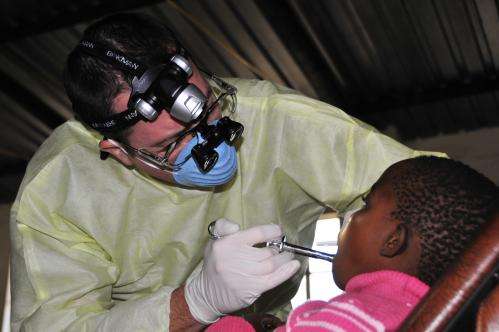Oral health improves via education

Better integration with primary health care, community outreach programs and culturally appropriate family and community programs could improve Indigenous dental health in Western Australia, research suggests.
The findings come from a University of Western Australia-led review examining approaches to Indigenous oral health worldwide, including New Zealand, Canada and the United States.
Professor Linda Slack-Smith says dental health improvements are vital.
"Australian Aboriginal and Torres Strait Islander people suffer two to three times the rate of untreated dental caries [cavities] than non-Aboriginal people," she says.
"Preventative interventions are especially important in the first year of life.
"Early childhood caries (ECC) have been shown to have serious consequences for hospitalisation rates, schooling, nutrition, growth and development, quality of life and long-term disease in permanent teeth."
At a treatment level, training dental students in Indigenous communities as part of outreach programs have shown positive outcomes in New Zealand and North America as there is a mutual understanding of cultures and behaviours.
Deploying dental hygienists for basic preventative care, such as applying topical fluoride varnish, has also proven successful and cost-effective.
Education has had a positive impact, both in schools and the community, which researchers suggest could be best accomplished by integrating oral health and primary health care.
Past traditions could enhance experience
They say another positive outcome could be employing Aboriginal healthcare workers to ensure culturally appropriate care, which could be enhanced by incorporating past customs and traditions into dental care.
"Historical data show that Indigenous populations generally had good oral health," Prof Slack-Smith says.
"Many traditional methods have been accepted and explained scientifically.
"Chewing sticks from a range of native tree species are used by many Indigenous communities around the world and have been shown to be effective to varying degrees."
The most notable is mustard tree (Salvadora persica), used throughout Africa, whose antimicrobial and anti-caries effects have been acknowledged by the World Health Organisation.
Similarly, the Noongar people traditionally used the antiseptic resin of red gum (Corymbia calophylla) for treating gum infections and numbing discomfort.
However, not all traditional dental practices are deemed safe such as the African practice of crushing up stinging ants and placing it on an aching tooth for one week, after which the tooth can be pulled out by hand.
The researchers say these initiatives could improve dental health but the only way to create long-lasting change is addressing social inequalities, such as poverty and lack of adequate housing.
More information: "International approaches to Indigenous dental care: what can we learn?" Aust Dent J. 2014 Aug 27. DOI: 10.1111/adj.12219. [Epub ahead of print]


















